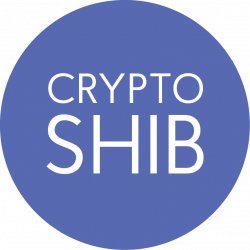You probably have comes across the phrase blockchain technology in your journey through the crypto universe on multiple occasion. Just looking at the words, the definition is somewhat self-explanatory to some “(Several blocks chained together)”. This is a surface definition of what a blockchain is and in this article, we will go deeper than this. Don’t worry though, we will surely make it as simple as possible without making you look stupid. So let’s get to it.
A Blockchain
A blockchain is tamper proofed digital ledger of data transactions that are designed to record everything on a network. It is a time-stamped series of an immutable record of data, not managed by a single entity. The data records are managed by a network of computers belonging to millions of individuals across multiple continents. The blocks on a blockchain are bonded to each other using cryptographic principles hence the term, “blockchain”.
To further break things down, blocks in this context are digital information. The chain is the public database the information is stored on. By public, it simply means anyone can view the data stored on it.
Blockchain technology was originally designed to store transactions information for digital currency (bitcoin). However, the technology has found its use in several industries and more use cases are been announced on a regular basis.
How the Blockchain Works
Now that we are all caught up on what a blockchain is, there is a need to understand how it works. To start with, we need to know what a block is and what information the block stores.
The three major information stored by a block are:
- Information about transactions.
- Information about who is participating in transactions.
- Information that distinguishes them from other blocks.
For those conversant with the use of any either Google Docs or Spreadsheets, you will notice that there is an option which makes it possible for anyone invited or given access to edit the work. Also, there is an option which allows anyone with a link to the document, edit and manage it.
Interestingly, this is similar to how the blockchain works on the surface level. However, the blockchain is a thousand times more complicated transparent than the analogy above, but the template is quite similar.
Just like with the Google Doc app, information held on the blockchain are shared. Meaning several people have access to the information without restrictions.
The blockchain database is not “installed” in a single location. It is available on as many devices as there is. This makes it highly decentralized (the process of distributing and dispersing power away from a central authority). Furthermore, the data on a blockchain is hosted by millions of computers simultaneously, there, its data is accessible to anyone on the internet.
Difference between the Blockchain and Bitcoin
Blockchain technology was first introduced by Stuart Haber and W. Scott Stornetta in 1991. These two researchers wanted to implement a system where document timestamps could not be tampered with. The blockchain is technically a platform or network where cryptographic projects are built on.
On the other hand, Bitcoin protocol is a cryptographic project built on a blockchain. Bitcoin was introduced in a research paper written by someone named Satoshi Nakamoto. In the paper, Satoshi referred to it as “a new electronic cash system that’s fully peer-to-peer, with no trusted third party.”
How the Blockchain Tamper-Proof Feature Works
In a blockchain, each preceding block has an impact on the next one. This simply means, you need information from an existing block to create a new block.
To ensure that each block created by any party is a valid one, the block is verified by millions of computers distributed around the net. Once verified, the block is added to the growing chain and made available for all to see. Since the newly created block will be including a signature from the latest block in its calculation, the block to be created will be a unique one.
The process of creating a block to be added to the chain is known as mining.
Falsifying a single record would mean falsifying the entire chain in millions of instances. That is virtually impossible. Bitcoin uses this model for monetary transactions, but it can be deployed in many other ways.
